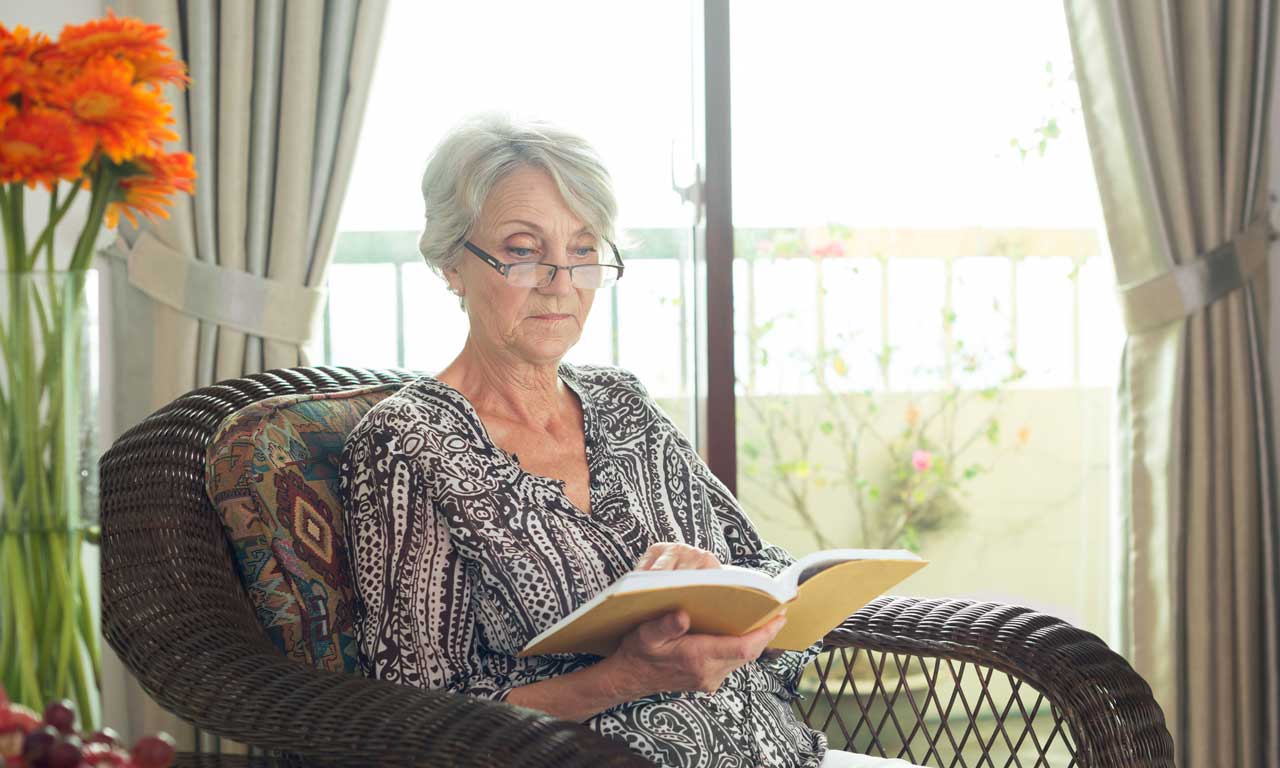5 visual aids to help you see more clearly

Your eyes and vision may change with time. Those changes may create small spots (or floaters) in your vision.1 Or it may become harder to read small print or see at night. Eventually, it may be more difficult to see clearly when you’re doing everyday tasks like reading, looking at digital devices and driving.
But there are plenty of things that can be done and visual aids that can be used to help you see better.
“Subtle vision changes typically start happening at around age 40,” says Jennifer Kaldenberg, O.T., a clinical associate professor of occupational therapy at Boston University Sargent College of Health and Rehabilitation Sciences in Boston. As you get older, you may develop a condition called presbyopia, which is when the eyes have difficulty focusing on objects close up. This happens to about 90% of Americans over 45.2
With age, there’s also an increased chance of eye conditions that can affect vision.3 These include cataracts which cause cloudiness on the eye lens, and age-related macular degeneration, which causes damage to a part of the eye called the macula, which is part of your retina.4,5 Glaucoma is another condition that can affect vision as you get older. It causes damage to the optic nerve.6
If you’re experiencing problems with your vision, be sure to reach out to an eye doctor for a comprehensive eye exam. They can help determine the cause of your symptoms and recommend treatment.
5 visual aids to help you see clearer
Whatever the eye doctor discovers, there are plenty of things that may help you see more clearly around the house and when you’re out and about. Consider the following visual aids and strategies that may make your life easier.
1. Reading glasses
Presbyopia is the reason that many people over 45 may need reading glasses, explains Kaldenberg.2 Although you can buy glasses (called readers) over-the-counter (OTC) in different magnifications that will help you see better, it’s also essential to get regular eye exams, advises Kaldenberg. Computer glasses, designed just for computer use, may also help with eye strain.7
If you need anything stronger than OTC readers for your vision needs, an eye doctor can help. They may prescribe eyeglasses and contact lenses after conducting a comprehensive eye exam.
2. Magnifiers
These devices can enlarge print, pictures and small objects. They may be especially helpful with reading and performing close-up tasks, like threading a needle. Some of these devices also come with built-in lighting to help you see more easily.8
There’s no one-size-fits-all magnifier device, so which one you choose depends on your needs.
Some options include:
A portable handheld magnifier
These are good for reading menus or checking labels at the grocery store. If you don’t want to carry one around in your bag, many smartphones and devices already come with one. Or you may want to download a magnifier app for free.8
A hands-free magnifier
When you want to read a book or do a craft, like knitting, you may want to try:8
- Magnifiers that fit onto your glasses and fold down when you use them
- Magnifiers you mount on a stand
- Special glasses with binocular lenses
3. Task lighting
“Lighting is really important as we age, because the older we get, the more light we need to see clearly,” says Kaldenberg.9
That’s important for day-to-day activities — and for safety. When a space is well lit, you lower the likelihood of falling. Using motion-activated lights in hallways and staircases can help you see better when it’s dark.10
Kaldenberg suggests using light-emitting diodes (LEDs) or compact fluorescent bulbs, whichever work best for you. Make sure your light is directed toward or sitting close by your task. The closer the light, the brighter the area around your task, adds Kaldenberg.
You also want to make sure the lighting is properly positioned so it doesn’t create glare. “When you have a lot of light entering the eye, the glare can be very uncomfortable,” says Kaldenberg.
The actual type of light or lamp you use may also help. When reading, a gooseneck lamp positioned over your shoulder may help you see better, notes Kaldenberg. That way, the light is directed onto the reading material and not at the eye.
Adding under-counter lighting in kitchens may also help you when prepping meals. And lights in closets or pantries can also help you see better.
4. Larger print
Reading a bigger typeface can help you see easier. That’s why using the zoom feature on your smartphone or computer may help too.
When you’re not using digital devices, there are other larger-print options that can make reading easier. “You can borrow books from the library or buy them in a bigger print, request larger print checks from the bank, and even find larger print on clocks, dominoes, and greeting and playing cards,” says Kaldenberg.
5. Contrasting colors
Similarly colored items can blend into each other, making it hard to distinguish one object from another. Making sure objects in your environment are highly contrasted may help you see better. For example, you can adjust the contrast settings on your digital devices like your TV and smartphone.
Lighting can also illuminate objects in a way that helps you see contrast better.11 “The best color contrasts are black and white,” says Kaldenberg. There’s even something called a 20/20 pen that has darker ink so it’s easier to see on white paper, she says.
If you’re having trouble seeing clearly, know there are plenty of visual aids that may help.
In addition, a referral to an occupational therapist can help you find solutions for things like reading mail or cooking safely in your kitchen, notes Kaldenberg. See your eye doctor first to make sure there isn’t something more serious causing your vision problems.